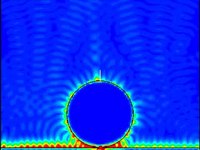
Photo from wikipedia
Abstract Ni06Zn0.3Co0.1YxFe2-xO4 ferrites (0 ≤ x ≤ 0.1) were fabricated by a sol–gel autocombustion method using Microwave Sintering Technology (MST) and Conventional Sintering Technology (CST). With increased Y3+ ions, the structure and electromagnetic performance… Click to show full abstract
Abstract Ni06Zn0.3Co0.1YxFe2-xO4 ferrites (0 ≤ x ≤ 0.1) were fabricated by a sol–gel autocombustion method using Microwave Sintering Technology (MST) and Conventional Sintering Technology (CST). With increased Y3+ ions, the structure and electromagnetic performance of all MST samples were better than those of CST. In addition, the MST and CST samples formed a second phase (YFeO3) when x > 0.025 because the radius of the Y3+ ion is larger than that of the Fe3+ ion. Compared with the CST samples, the MST samples showed increased densification and average grain size. Meanwhile, excellent electromagnetic performance of MST was achieved when the amount of Y substitution was 0.025, with high saturation magnetization (Ms, 154.19 emu/g), the lowest coercivity (Hc, 20.21 Oe), the lowest dielectric constant (e′, 10.82@1 MHz), lower dielectric loss (tanδ, 0.0093@1 MHz) and the highest direct-current resistivity (ρ, 2.706 × 106 Ω⋅m). These excellent results also confirm the good prospects of microwave sintering, which can better meet the needs of modern electronic devices for high frequency and low loss.
Journal Title: Ceramics International
Year Published: 2020
Link to full text (if available)
Share on Social Media: Sign Up to like & get
recommendations!